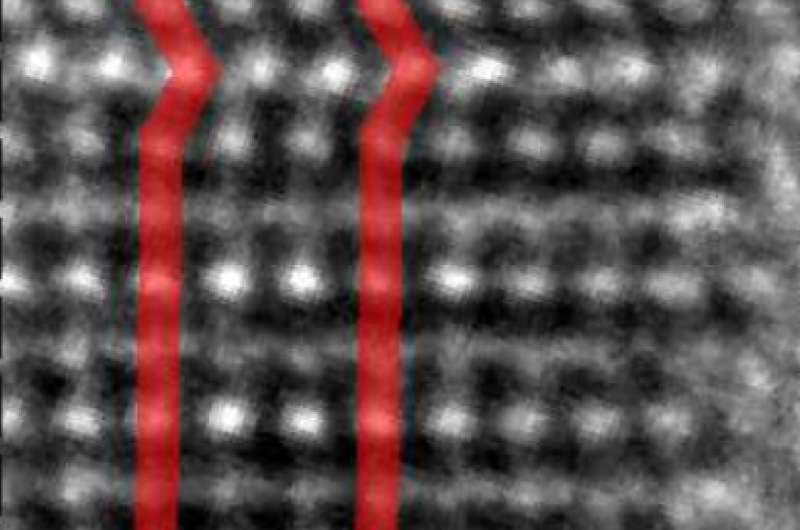Scientists find that mechanical behavior of tiny structures is affected by atomic defects

An international team of scientists with participation from the University of Göttingen, the Indian Institute of Science, Bangalore, Pennsylvania State University, and Wright State University has measured the mechanics of tiny crystalline ceramics. Materials are made of atoms, and if they are arranged periodically, they are called crystalline structures. If the size of these crystalline structures is 1,000 times smaller than a single human hair diameter, then they are called nano-structures such as nano-rods, nano-wires, nano-ribbons, nano-belts etc. In some cases, special atomic arrangements enable them to convert mechanical energy into electrical energy. These materials are called piezoelectric materials. They are useful for energy harvesting as well as a variety of electro-mechanical gadgets to enhance the quality of life. Hence, it is important to have a grip on these nano-structures and measure their mechanical responses. Until now, it was unknown that mechanical behavior of piezoelectric nano-crystals containing atomic defects is different than pure. This recent study is reported in the journal Nano Letters.
In nature, crystals are never 100 percent perfect, and they have various kinds of structural defects. One such defect type is a stacking-fault. This is considered a structural defect. In a stacking fault, a stack of periodic arrangements of atoms in crystals gets added or missing. Dr. Kasra Momeni, Director of Advanced Hierarchical Materials by Design Laboratory and faculty member of Mechanical Engineering at Louisiana Tech University, elaborates that the presence of structural defects including stacking faults can significantly alter the stress distribution. This is due to the complex interaction between stress fields from stacking faults and the ones from free boundaries of the nano-rods, which can alter the failure mechanism of nanorods with stacking faults compared to the perfect ones.
"Since energy harvesting is one of the key requirements in today's age, converting mechanical forces into a useful form of energy, i.e. electrical output, is an alternative to other energy transduction modes as well as an efficient approach. There are several crystalline ceramics which convert mechanical energy into electrical energy. We introduced a new concept that mechanics of these tiny crystalline ceramic structures are dependent on atomic defects. For example, they can collapse and their mechanical properties are not as expected. Consideration of these facts will enable us to design energy harvesting devices out of such tiny structures," explains Dr. Moumita Ghosh, leading scientist of this research from the University of Göttingen and former doctoral research scholar of the Indian Institute of Science, Bangalore.
The new finding reveals a non-intuitive know-how of defects in terms of mechanics at low dimension. Defect engineering in piezoelectric nanomaterials in future will enable us to realize various high quality and cost-effective vibration-based energy harvesting as well as electro-mechanical devices for biomedical research, diagnostics, and electronic applications.

More information: Moumita Ghosh et al. Atomic Defects Influenced Mechanics of II–VI Nanocrystals, Nano Letters (2016). DOI: 10.1021/acs.nanolett.6b00571
Journal information: Nano Letters
Provided by University of Göttingen


















